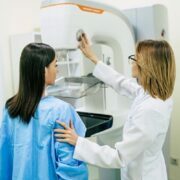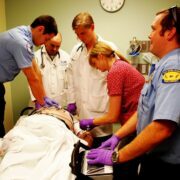The paleo diet has caused quite a stir in terms of nutrition. Most people following this new nutritional trend choose red meat, overgrown with fat and preferably in a blood version. Is beef actually healthier than chicken?
Table of Contents
Red or white meat?
We divide the meat into white and red, but it is not the color that plays the most important role in this division. White meat is lean, low-fat meat derived from chicken, turkey, rabbit and veal. By contrast, red meat, mainly beef, pork and game, contains more fat. This division began to play an important role when the cholesterol-fat hypothesis was developed in the 1950s. It linked the increase in blood cholesterol and the resulting heart and arterial disease to increased consumption of saturated fat in meat and animal products. To this day, numerous controversies arise around this theory, and many studies confirm it and rule it out. You must avoid these foods and get healthy cancer diets to stay fit and healthy.
Meat composition
Chicken breast is the meat most often recommended by nutritionists and doctors due to its low fat and caloric content – 100 g contains 0.3 grams of saturated fat, 104 kcal and 21.5 g of wholesome protein. Among the important vitamins and micronutrients that meat can be a good source of, we can find (approximate values) 0.4 mg of iron, 30 mg of magnesium, 0.5 mg of zinc, 17 mcg of selenium, 13 mg of vitamin B3, the rest from group B below 1 mg and vitamin B12 – 0.4 micrograms. Replacing red meat with chicken and proper preparation of the meat, such as stewed or baked, helps to reduce the consumption of calories and fats, thus effectively reducing body fat.
Relatively calorically, similar to chicken, is beef tenderloin – it provides 117 kcal per 100 g, but 3.5 g of saturated fat – 10 times more than chicken breast and 20 g of protein. The micronutrients and vitamins it contains are iron – 3 mg, magnesium – 26 mg, zinc – 3 mg, selenium – 9 mcg, vitamin B 12 – 1.4 micrograms, vitamin B3 – 5.5 mg, others from group B below 1 mg. It is definitely a better source of iron, zinc and vitamin B12.
The cholesterol content of chicken breast and beef tenderloin is similar. However, most red meat is much more caloric and high in fat and cholesterol. During the heat treatment of meat, both fats and cholesterol are oxidized and become a source of harmful free oxygen radicals. As long as we don’t just eat tartare, this is another aspect that speaks in favor of restricting fatty meats in the diet.
Red meat carcinogenic?
A World Health Organization report classified processed red meat as one of the factors that increase the likelihood of cancer. There is an increased incidence of colon cancer as well as pancreatic and prostate cancer in people who consume more red meat products.
The main factors responsible for this are the preservatives in processed products, trans fats, high salt content and less fiber consumption by people who choose these products. No balanced, healthy diet recommends such products. Red meat, also unprocessed, also made it on this list, however
with a lower probability, not yet confirmed by human studies.
Who Should Avoid Red Meat?
Especially people with high cholesterol, who are at a higher risk of heart disease and burdened with additional factors that increase the risk of heart disease and cancer, such as smoking, lack of exercise, a diet based on processed foods, low in fiber and antioxidants contained in vegetables and fruit.
Healthy people, with high physical activity, with an increased need for iron, zinc and vitamin B12, can add red meat to their diet to provide these nutrients. The high-fat diet has not proven successful as a diet that reduces the risk of lifestyle diseases, as evidenced by annual comparisons of diets, in which the paleo diet ranks near the end of the list. However, a good conclusion that can be drawn from it is to eat the least processed and good quality food.
What are proto-oncogenes?
The answer of what are proto-oncogenes is here: A proto-oncogene is a gene found in a healthy cell that, through a mutation, can turn into a cancer gene. We call this damaged gene an oncogene. This group includes genes:
- SIS
- HST
- RET
- erb A
- N-myc
- Moat
- Abel
- H-RAS
Protoncogenes perform numerous functions in a healthy cell. This group includes genes needed for the synthesis of the growth factor, receptor and regulatory proteins. Their role is to initiate and control cell division. They are also involved in the process of apoptosis.
The conversion of a proto-oncogene into an oncogene is often associated with a chromosomal mutation. This means, for example, the transfer of a fragment of one chromosome to another or the duplication of a fragment of the content contained on it.














Comments